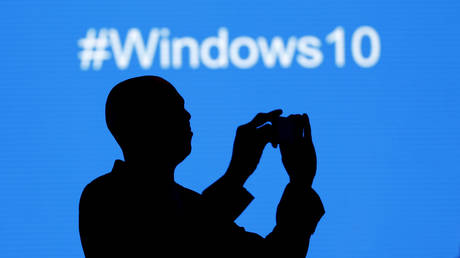
Amid the ongoing pandemic, and after a succession of damaging upgrades, Microsoft would be well advised to delay the rollout of its latest iteration of Windows 10 to save users further frustration.
As Covid-19 rages on, PCs and their operating systems (OS) are proving society’s saviors, acting as our new lifeline to the outside world as the health crisis upends every aspect of our lives. In March, as the deadliness of coronavirus really started to sink in, Windows 10 reportedly accounted for 57.3 percent of global OS share, representing 64.3 percent of all Windows-powered PCs.
Despite being one of the world’s most popular operating systems, celebrated for its “reliability and efficiency,” Windows 10 has recently been plagued with a string of update flaws. At a time when millions are working from home and communicating remotely with loved ones via a home computer, its critical-upgrade errors couldn’t have been more inopportune.
On March 24, Microsoft released the latest cumulative, albeit optional, KB4535996 update. It was designed to solve previously reported search issues, but, instead, created even more, with users reporting error screens and an array of performance problems.
As if Microsoft’s March mishaps weren’t bad enough, its security upgrades for April, collectively known as Patch Tuesday, revealed another flaw in the system. A total of 133 vulnerabilities were reported across a range of Microsoft products – and seven of the 15 critical vulnerabilities were for Windows 10.
Causing specific concern is the KB4541335 update, which has prompted users to complain that the downloads have ‘bricked’ their PC. The dreaded ‘blue screen of death’ has even been reported – a blank screen displaying only an error message, following a fatal system crash. Other issues after installing the update include unusually high central processing unit and memory usage.
On April 16, an update was made to Windows 10’s built-in anti-malware software, Windows Defender. Once more, users described a series of errors after installing it, including a fault that prevents them running scans, thereby potentially exposing their PC to security bugs and other risks.
Creating a further burden for Windows 10 users is the latest iteration of Windows 10, slated to be rolled out in May.
In a statement about the imminent upgrade, Microsoft cautioned that anyone using Windows Mixed Reality might want to hold off, because the platform might no longer work properly without a fix.
Following a rotten run of upgrades and admission by the company itself that its forthcoming ‘May update’ may trigger problems, Microsoft should probably consider delaying installing the update until a time when reliance on computers and flawless operating system might not be so desperate.
Like this story? Share it with a friend!




